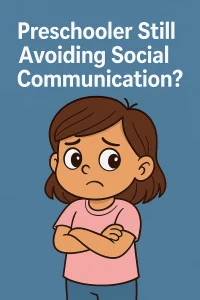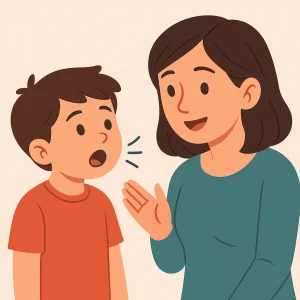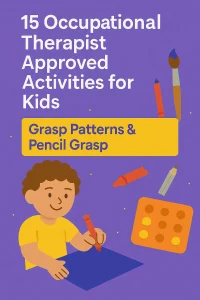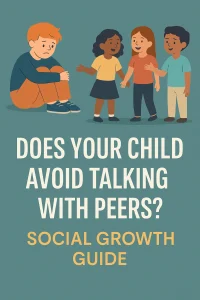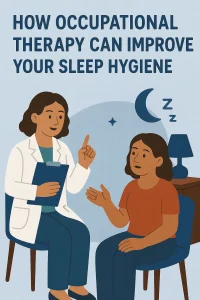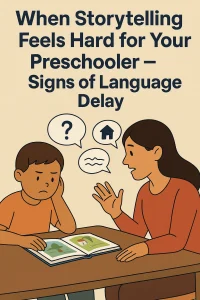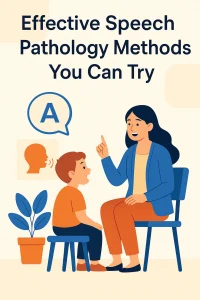Speech Therapy for Lisp: Improve Clarity and Confidence
By Wellness Hub
Last Updated: June 18, 2025
Have you ever noticed someone having difficulty pronouncing certain sounds, making their speech sound a bit different? This might be due to a speech issue known as a lisp. Lisp sentences are characterized by the mispronunciation of certain consonants, particularly ‘s’ and ‘z’ sounds, which can make speech sound slurred or unclear. For example, “simple sentences” might sound like “thimple thententheth.”
Understanding how lisp sentences affect communication is crucial. Imagine trying to convey an important message, but the listener struggles to understand because of the way words are pronounced. This can lead to misunderstandings, frustration, and even social anxiety. For children, it can affect their learning and interaction with peers, while adults may find it impacts their professional and personal relationships.
Free Speech Help for Kids
Concerned about speech delays? Book a free consultation with our expert speech therapist and get guidance tailored to your child’s needs.
Understanding Lisp Sentences
Definition and Characteristics of Lisp Sentences
Lisp sentences occur when individuals have difficulty pronouncing certain sounds, especially ‘s’ and ‘z’. This speech issue results in words sounding slurred or unclear, as the tongue misplaces itself during speech. For instance, “sun” might be pronounced as “thun,” and “zoo” could sound like “thoo.” These pronunciation challenges can vary in severity, but they typically involve a distortion of the ‘s’ and ‘z’ sounds, affecting speech clarity.
Common Causes of Lisp Sentences
Several factors can lead to the development of lisp sentences, including:
- Developmental Issues: Some children naturally develop a lisp during their speech development phase. While many outgrow it, some may continue to have difficulties.
- Physical Factors: Issues such as tongue-tie (ankyloglossia), dental problems, or a tongue thrust can contribute to a lisp. These physical attributes can interfere with proper tongue placement.
- Hearing Impairments: Difficulty hearing certain sounds can lead to improper pronunciation, including lisp sentences.
- Neurological Conditions: In some cases, neurological disorders can affect muscle control, leading to a lisp.
Examples of Lisp Sentences
To better understand how lisp sentences manifest, let’s look at a few examples:
- Standard Sentence: “Sally sells seashells by the seashore.”
- With a Lisp: “Thally thells theashells by the theathore.”
- Standard Sentence: “Please pass the peas.”
- With a Lisp: “Pleath path the peath.”
Comparison of Lisp Types
| Lisp Type | Characteristics | Example Sentence |
|---|---|---|
| Interdental Lisp | The tongue pushes between the teeth, resulting in a “th” sound instead of “s” or “z”. | “Thun” instead of “sun” |
| Lateral Lisp | Air escapes over the sides of the tongue, producing a slushy sound. | “Thally thells” instead of “Sally sells” |
| Dental Lisp | The tongue touches the front teeth, causing a “th” sound for “s” or “z”. | “Pleath path” instead of “Please pass” |
The Impact on Communication
How Lisp Sentences Affect Clarity and Understanding
Lisp sentences can significantly impact the clarity and understanding of speech. When certain sounds are mispronounced, it can be challenging for listeners to decipher words correctly. For instance, “soup” might be heard as “thoup,” and “zebra” as “thebra.” This mispronunciation often requires listeners to pay extra attention, leading to potential confusion and the need for repeated communication. Clear speech is essential for effective communication, and a lisp can hinder this clarity, affecting how messages are conveyed and understood.
Social and Emotional Impacts on Individuals with a Lisp
Living with a lisp can have profound social and emotional effects. Children with a lisp might experience bullying or teasing from peers, which can lead to low self-esteem and social withdrawal. Adults might feel self-conscious about their speech, impacting their confidence in social and professional settings. The emotional burden of a lisp can also lead to anxiety and avoidance of speaking situations, further isolating the individual. It’s important to recognize these impacts and offer support and encouragement to those affected.
The Potential for Misunderstandings and Miscommunication
Miscommunication is a common consequence of lisp sentences. When speech is unclear, it increases the likelihood of misunderstandings. For example, in a classroom setting, a teacher might misinterpret a student’s response, leading to confusion and frustration. In a workplace, unclear communication can affect teamwork and productivity. Misunderstandings due to a lisp can strain relationships, both personally and professionally, as the need for constant clarification can be exhausting for both the speaker and the listener.
Speech Therapy for Lisp Sentences
Overview of Speech Therapy and Its Role
Speech therapy plays a crucial role in helping individuals overcome lisp sentences. This specialized therapy focuses on improving speech clarity and communication skills through targeted exercises and techniques. Speech therapists, also known as speech-language pathologists, work closely with individuals to identify the specific nature of their lisp and develop a personalized treatment plan. The goal is to correct the mispronunciation of sounds and enhance overall speech intelligibility, enabling individuals to communicate more effectively.
Techniques and Exercises Used in Speech Therapy for Lisp Sentences
Speech therapists employ a variety of techniques and exercises to address lisp sentences. Some of the most common methods include:
- Articulation Exercises: These exercises focus on the correct placement and movement of the tongue, lips, and jaw to produce clear sounds. Practicing specific sounds repeatedly helps individuals develop muscle memory for accurate pronunciation.
- Auditory Discrimination: This technique helps individuals distinguish between correct and incorrect sounds. By listening to and identifying different sounds, they become more aware of their own speech patterns and can make necessary adjustments.
- Tongue Placement Drills: Exercises that target the correct positioning of the tongue are essential for individuals with a lisp. For example, placing the tongue behind the upper teeth when producing ‘s’ and ‘z’ sounds can help eliminate the lisp.
- Slow and Controlled Speech: Encouraging individuals to speak slowly and deliberately can improve their awareness of tongue placement and sound production. Over time, this practice leads to more accurate and clear speech.
- Mirror Exercises: Using a mirror to observe tongue and mouth movements helps individuals visually understand the correct articulation of sounds. This visual feedback can be very effective in correcting a lisp.
Speech Therapy Exercises
| Exercise | Description | Benefits |
|---|---|---|
| Articulation Exercises | Practice specific sounds repeatedly to improve the precision and clarity of pronunciation. | Improves pronunciation |
| Auditory Discrimination | Activities designed to help individuals identify and distinguish between different sounds, enhancing their ability to hear the differences in similar sounds. | Enhances sound recognition |
| Tongue Placement Drills | Exercises that focus on the correct positioning of the tongue when producing specific sounds, which is crucial for correct articulation. | Corrects mispronunciation |
| Slow and Controlled Speech | Encouraging individuals to speak slowly and deliberately to focus on the proper formation of sounds and words, reducing errors. | Reduces mispronunciation |
| Mirror Exercises | Using a mirror to observe the movements of the mouth and tongue while speaking, providing visual feedback to help correct and improve articulation. | Provides visual feedback |
Strategies to Improve Communication
Tips for Individuals with a Lisp to Enhance Communication
Improving communication when you have a lisp can be a gradual process, but with the right strategies, significant progress can be made. Here are some practical tips:
- Practice Regularly: Consistent practice is key. Spend time each day working on specific sounds and sentences that challenge you. This repetition helps build muscle memory.
- Speak Slowly and Clearly: Taking your time when speaking can help you focus on the correct placement of your tongue and lips. This will improve clarity and reduce the likelihood of mispronunciation.
- Use Mirror Exercises: Practice speaking in front of a mirror to observe your tongue and mouth movements. This visual feedback can help you make necessary adjustments.
- Record Yourself: Recording your speech and listening to it can help you identify specific areas that need improvement. It also allows you to track your progress over time.
- Engage in Tongue Twisters: While challenging, tongue twisters are excellent exercises for improving articulation. Start with simple ones and gradually move to more complex phrases.
Advice for Family, Friends, and Colleagues to Support Those with a Lisp
Supporting someone with a lisp requires patience and understanding. Here’s how you can help:
- Be Patient: Allow the person time to express themselves without interrupting or finishing their sentences. This shows respect and reduces their anxiety.
- Provide Positive Feedback: Encourage and praise their efforts and improvements, no matter how small. Positive reinforcement can boost their confidence.
- Avoid Mocking or Teasing: Even if intended as a joke, mocking someone’s speech can be hurtful and damaging to their self-esteem. Always be supportive and respectful.
- Help with Practice: Offer to practice speech exercises with them. This can be a fun and supportive way to assist their progress.
- Learn About the Condition: Educate yourself about lisp sentences and speech therapy techniques. Understanding what they are going through can help you provide better support.
Conclusion
We’ve explored how lisp sentences can impact communication, including what they are and their common causes. We looked at how they affect speech clarity, social interactions, and the potential for misunderstandings. We also discussed the role of speech therapy, highlighting different techniques and success stories. Additionally, we provided practical tips for individuals with a lisp, advice for their support networks, and useful tools and resources for continuous improvement.
If you or someone you know struggles with a lisp, it’s important to seek help. Speech therapy can greatly improve speech clarity and boost confidence. Many people have successfully overcome their lisp and improved their communication skills. Wellness Hub offers resources and expert support to help you on this journey. Remember, addressing lisp sentences can lead to better communication, improved relationships, and greater self-confidence. For more support, visit Wellness Hub.
Frequently Asked Questions:
1. How do lisp sentences impact communication?
Lisp sentences affect communication by making speech less clear, which can lead to misunderstandings. This can create challenges in both personal and professional interactions.
2. What causes lisp sentences in speech?
Lisp sentences can be caused by developmental issues, physical factors such as tongue-tie or dental problems, hearing impairments, and sometimes neurological conditions.
3. Can speech therapy help with lisp sentences?
Yes, speech therapy is highly effective in treating lisp sentences. Therapists use various techniques and exercises to improve articulation and speech clarity.
4. How to improve communication for someone with a lisp?
Improving communication for someone with a lisp involves regular practice, speaking slowly, using mirror exercises, recording speech, and practicing tongue twisters. Support from family and friends is also crucial.
5. What are effective techniques for managing lisp sentences?
Effective techniques include articulation exercises, auditory discrimination, tongue placement drills, slow and controlled speech practice, and using mirror exercises to observe and correct tongue and mouth movements.
6. How can family and friends support someone with a lisp?
Family and friends can support someone with a lisp by being patient, providing positive feedback, avoiding teasing, helping with practice, and educating themselves about the condition.
7. Are there any tools or resources available for continuous improvement of lisp sentences?
Yes, there are many tools and resources available, including speech therapy apps, online videos and tutorials, support groups, professional speech therapy, and books on speech improvement techniques.
8. What are some common examples of lisp sentences?
Examples of lisp sentences include “thally thells theashells by the theathore” instead of “Sally sells seashells by the seashore” and “Pleath path the peath” instead of “Please pass the peas.”
9. How do lisp sentences affect social and emotional well-being?
Lisp sentences can affect social and emotional well-being by causing self-consciousness, anxiety, and social withdrawal. Individuals may experience bullying or teasing, leading to low self-esteem.
10. Where can I find professional help for lisp sentences?
Professional help for lisp sentences can be found through speech therapists and resources offered by organizations like Wellness Hub. Visit Wellness Hub for more information and support.
About the Author:
Anuradha Karanam
Speech-language pathologist (7+ years of experience)
Anuradha Karanam is a skilled speech-language pathologist with over 6 years of experience. Fluent in Tamil, Telugu, Hindi, and English, she specializes in parent counseling, speech sound disorders, fluency assessment, and speech-language evaluations. Anuradha excels at working with children with developmental disorders, offering creative and effective therapy programs. Currently, at Wellness Hub, she holds a BASLP degree and is registered with the RCI (CRR No A85500). Her patience, ambition, and dedication make her a trusted expert in her field.
Book your Free Consultation Today
Parent/Caregiver Info:
Client’s Details:
* Error Message
